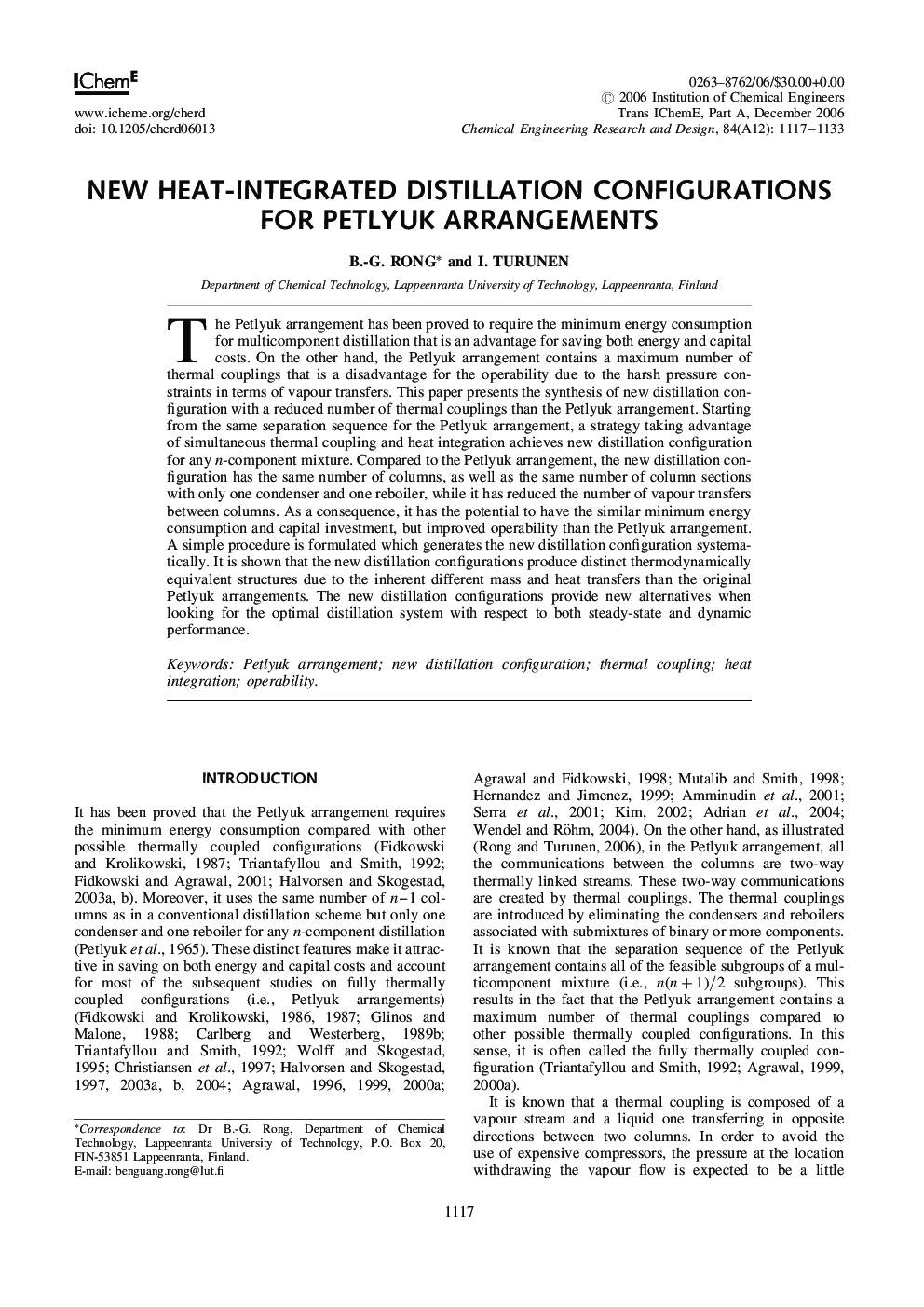| Article ID | Journal | Published Year | Pages | File Type |
|---|---|---|---|---|
| 622585 | Chemical Engineering Research and Design | 2006 | 17 Pages |
Abstract
The Petlyuk arrangement has been proved to require the minimum energy consumption for multicomponent distillation that is an advantage for saving both energy and capital costs. On the other hand, the Petlyuk arrangement contains a maximum number of thermal couplings that is a disadvantage for the operability due to the harsh pressure constraints in terms of vapour transfers. This paper presents the synthesis of new distillation configuration with a reduced number of thermal couplings than the Petlyuk arrangement. Starting from the same separation sequence for the Petlyuk arrangement, a strategy taking advantage of simultaneous thermal coupling and heat integration achieves new distillation configuration for any n-component mixture. Compared to the Petlyuk arrangement, the new distillation configuration has the same number of columns, as well as the same number of column sections with only one condenser and one reboiler, while it has reduced the number of vapour transfers between columns. As a consequence, it has the potential to have the similar minimum energy consumption and capital investment, but improved operability than the Petlyuk arrangement. A simple procedure is formulated which generates the new distillation configuration systematically. It is shown that the new distillation configurations produce distinct thermodynamically equivalent structures due to the inherent different mass and heat transfers than the original Petlyuk arrangements. The new distillation configurations provide new alternatives when looking for the optimal distillation system with respect to both steady-state and dynamic performance.
Related Topics
Physical Sciences and Engineering
Chemical Engineering
Filtration and Separation
Authors
B.-G. Rong, I. Turunen,
